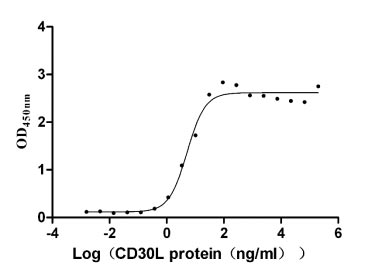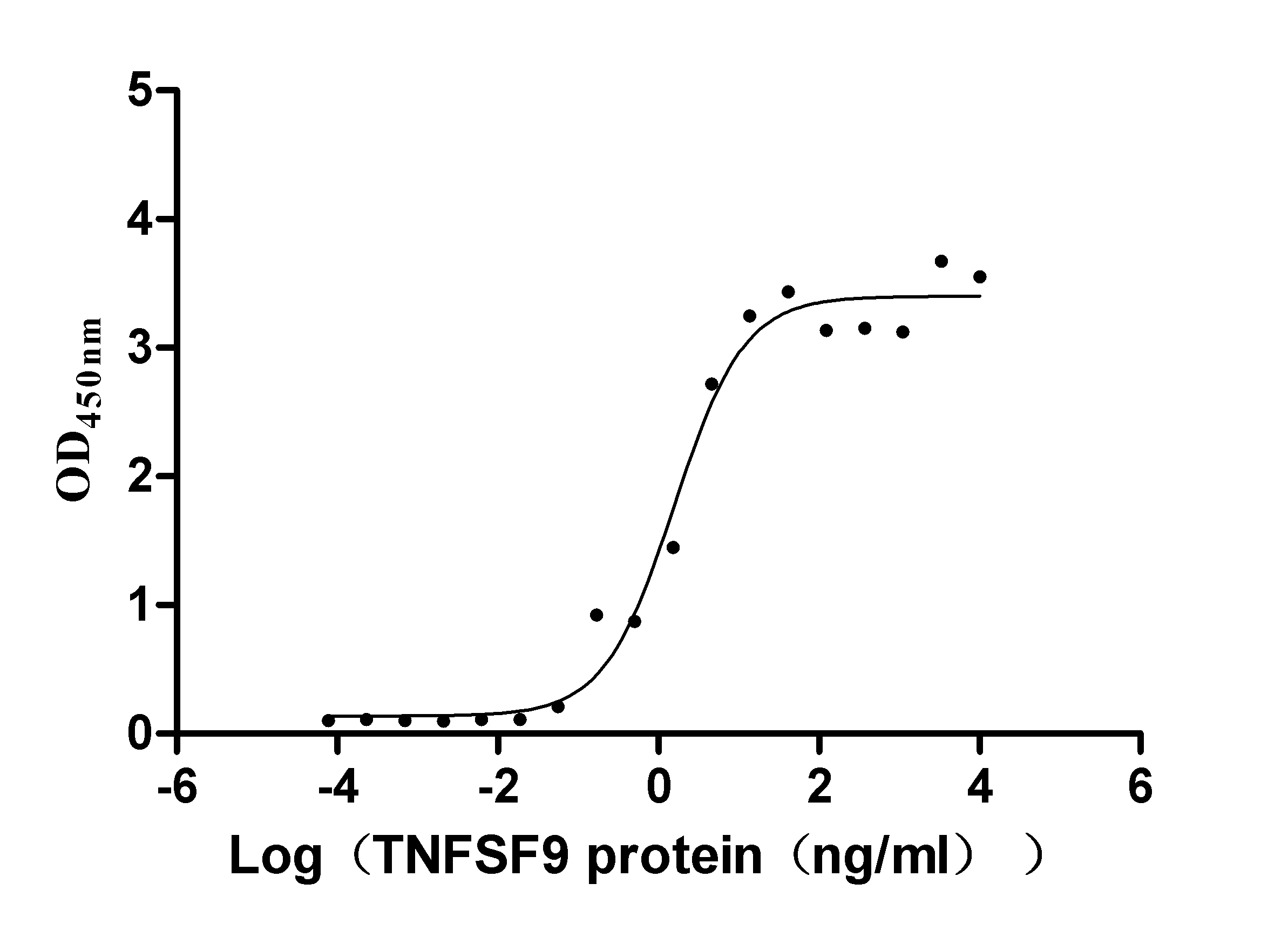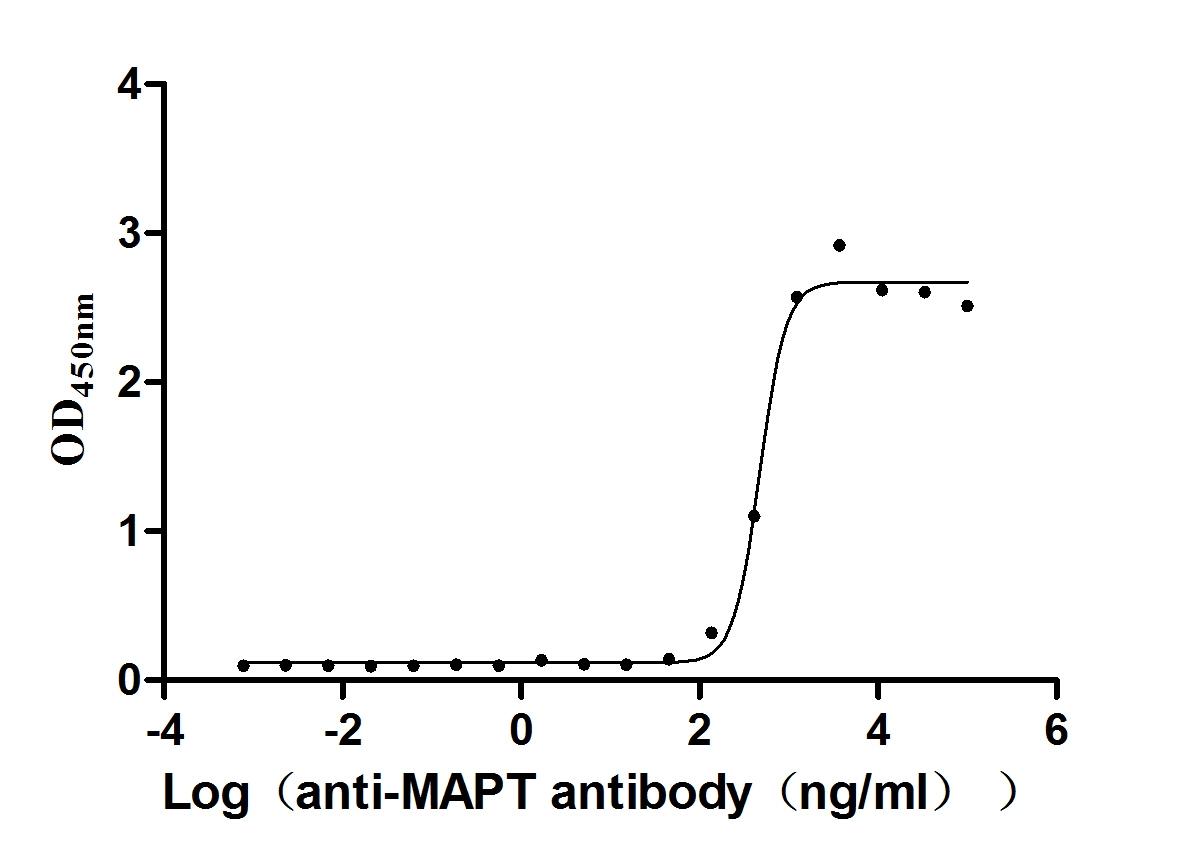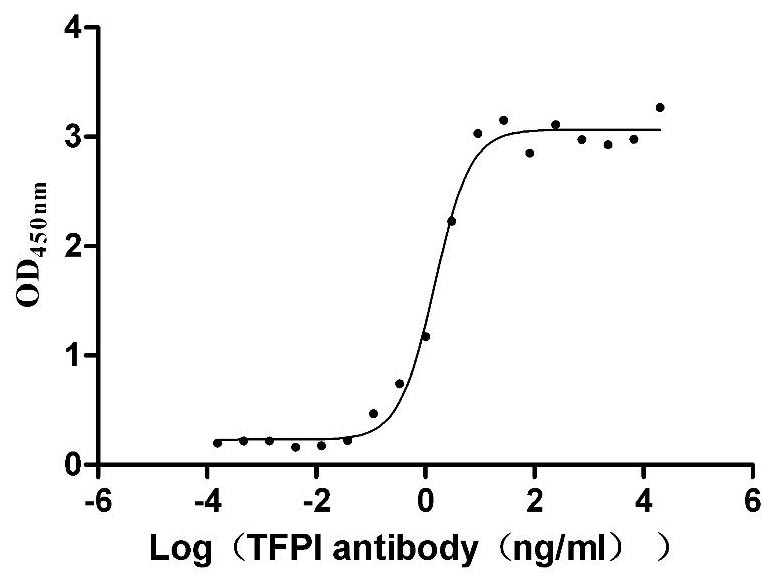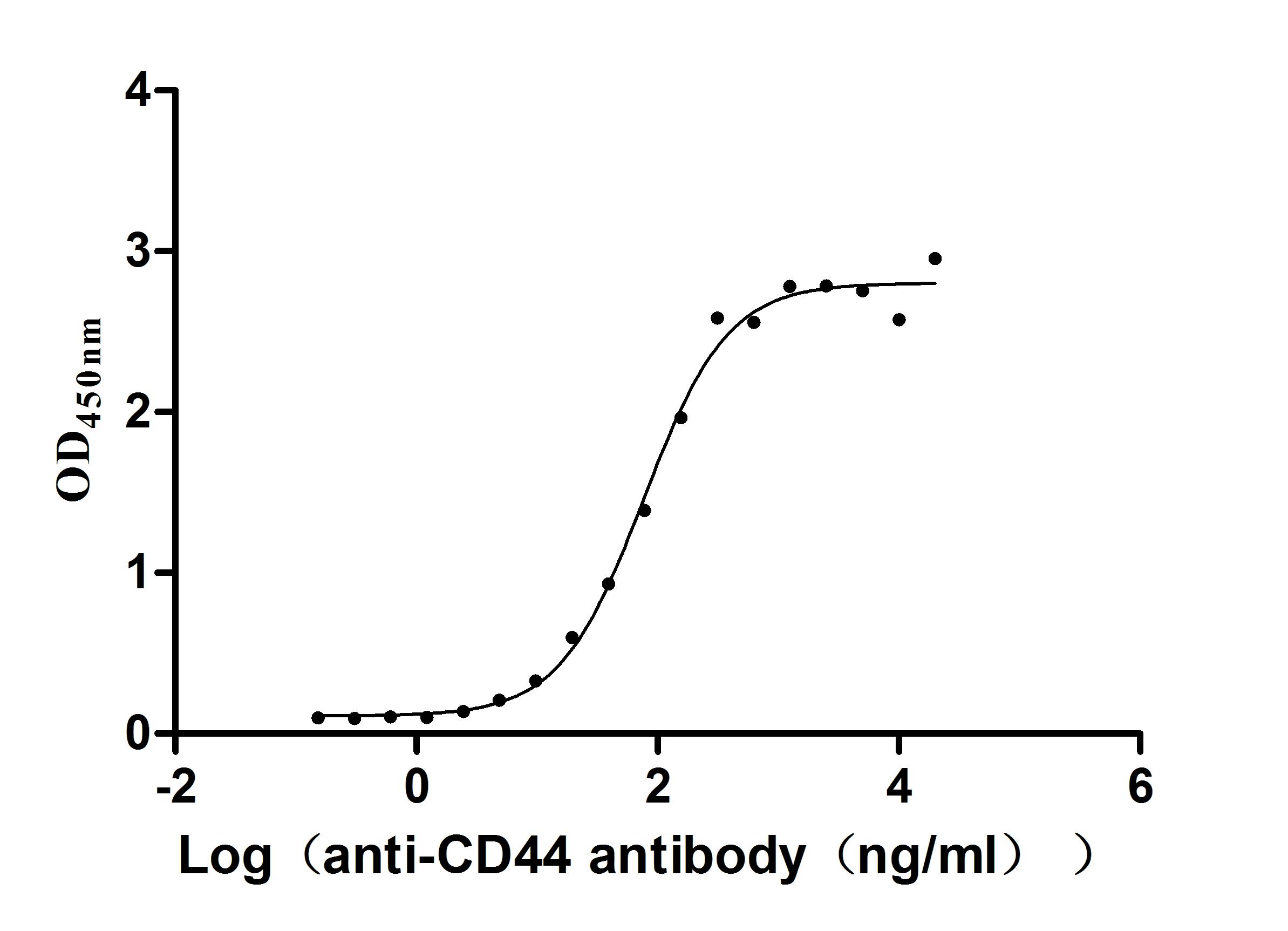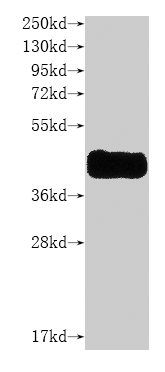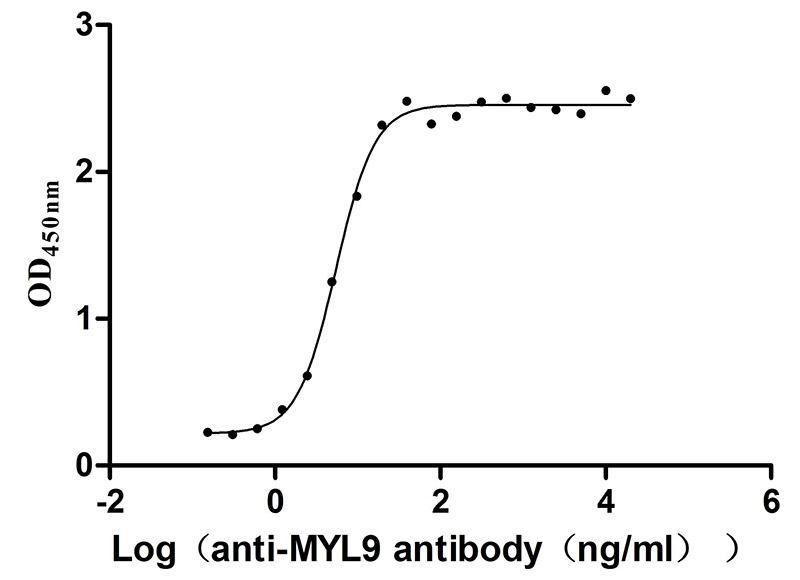Recombinant Human F-box only protein 7 (FBXO7 FBX7)
-
中文名稱:
-
貨號:CSB-YP008516HU
-
規(guī)格:
-
來源:Yeast
-
其他:
-
中文名稱:
-
貨號:CSB-EP008516HU
-
規(guī)格:
-
來源:E.coli
-
其他:
-
中文名稱:
-
貨號:CSB-EP008516HU-B
-
規(guī)格:
-
來源:E.coli
-
共軛:Avi-tag Biotinylated
E. coli biotin ligase (BirA) is highly specific in covalently attaching biotin to the 15 amino acid AviTag peptide. This recombinant protein was biotinylated in vivo by AviTag-BirA technology, which method is BriA catalyzes amide linkage between the biotin and the specific lysine of the AviTag.
-
其他:
-
中文名稱:
-
貨號:CSB-BP008516HU
-
規(guī)格:
-
來源:Baculovirus
-
其他:
-
中文名稱:
-
貨號:CSB-MP008516HU
-
規(guī)格:
-
來源:Mammalian cell
-
其他:
產(chǎn)品詳情
-
純度:>85% (SDS-PAGE)
-
基因名:FBX7
-
Uniprot No.:
-
別名:F-box only protein 7 FBXO7 FBX7
-
種屬:Homo sapiens (Human)
-
蛋白標簽:Tag?type?will?be?determined?during?the?manufacturing?process.
The tag type will be determined during production process. If you have specified tag type, please tell us and we will develop the specified tag preferentially. -
產(chǎn)品提供形式:Liquid or Lyophilized powder
Note: We will preferentially ship the format that we have in stock, however, if you have any special requirement for the format, please remark your requirement when placing the order, we will prepare according to your demand. -
復溶:We recommend that this vial be briefly centrifuged prior to opening to bring the contents to the bottom. Please reconstitute protein in deionized sterile water to a concentration of 0.1-1.0 mg/mL.We recommend to add 5-50% of glycerol (final concentration) and aliquot for long-term storage at -20℃/-80℃. Our default final concentration of glycerol is 50%. Customers could use it as reference.
-
儲存條件:Store at -20°C/-80°C upon receipt, aliquoting is necessary for mutiple use. Avoid repeated freeze-thaw cycles.
-
保質(zhì)期:The shelf life is related to many factors, storage state, buffer ingredients, storage temperature and the stability of the protein itself.
Generally, the shelf life of liquid form is 6 months at -20°C/-80°C. The shelf life of lyophilized form is 12 months at -20°C/-80°C. -
貨期:Delivery time may differ from different purchasing way or location, please kindly consult your local distributors for specific delivery time.Note: All of our proteins are default shipped with normal blue ice packs, if you request to ship with dry ice, please communicate with us in advance and extra fees will be charged.
-
注意事項:Repeated freezing and thawing is not recommended. Store working aliquots at 4°C for up to one week.
-
Datasheet :Please contact us to get it.
相關(guān)產(chǎn)品
靶點詳情
-
功能:Substrate recognition component of a SCF (SKP1-CUL1-F-box protein) E3 ubiquitin-protein ligase complex which mediates the ubiquitination and subsequent proteasomal degradation of target proteins. Recognizes BIRC2 and DLGAP5. Plays a role downstream of PINK1 in the clearance of damaged mitochondria via selective autophagy (mitophagy) by targeting PRKN to dysfunctional depolarized mitochondria. Promotes MFN1 ubiquitination.
-
基因功能參考文獻:
- Fbxo7 deficiency is associated with reduced cellular NAD(+) levels, which results in increased mitochondrial NADH redox index and impaired activity of complex I in the electron transport chain. PMID: 27689878
- Structure and function of Fbxo7 in Parkinson's disease has been summarized. (Review) PMID: 26965690
- Gsk3beta and Tomm20 are substrates of the SCFFbxo7/PARK15 ubiquitin ligase associated with Parkinson's disease PMID: 27503909
- Mutations in the F-box only protein 7 (FBXO7) gene, located on chromosome 22q12-q13, have been identified as having distinct clinical features in patients with hereditary Parkinson's disease (PD). PMID: 26882974
- The mutations of F-box protein 7 (FBXO7) gene (T22M, R378G and R498X) are associated with autosomal recessive juvenile-onset Parkinson's disease We demonstrated wild-type FBXO7 is a stress response protein with both cytoprotective and neurotoxic roles PMID: 26310625
- This is first time a FBXO7 mutation has been identified that causes phenotype compatible with typical idiopathic Parkinson's disease and presents with some of its common nonmotor features PMID: 26010069
- High expression of PARK15 might lead to the occurrence of non-small-cell lung cancer. PMID: 26245297
- genetic analysis of this Turkish family and the Italian PARK15 family reported previously revealed that the c.1492C > T mutation is present on two different haplotypes in the Italian family PMID: 25085748
- in addition to the parkinsonian-pyramidal phenotype, in connection with FBXO7 mutations and points to an intrafamilial phenotypic variation PMID: 25169713
- Cys52 variant of FBXO7 may contribute to reduced Parkinson's disease susceptibility in Chinese PMID: 25029497
- The involvement of the FBXO7 gene in PD is very rare, at least in this population from southern Spain. PMID: 24112787
- The crystal structure of the Fbxo7 FP domain is reported at 2.0 A resolution. The Fbxo7 FP domain adopts an alpha/beta-fold similar to that of the PI31 FP domain. PMID: 24419388
- A mutational analysis of the FBXO7 gene in Taiwanese patients with Parkinson's disease (PD) does not show a potential pathophysiological role in PD. PMID: 23352116
- This study showed that Fbxo7 participates in mitochondrial maintenance through direct interaction with PINK1 and Parkin and acts in Parkin-mediated mitophagy. PMID: 23933751
- An important role is suggested for FBXO7 in the pathogenesis of synucleinopathies, including Parkinson's disease and multiple system atrophy. PMID: 23656991
- Mutations in FBX07 is often associated with rapidly progressive parkinsonism and with additional features including pyramidal signs, cognitive decline and loss of sustained Levodopa responsiveness. PMID: 23196729
- analysis of the zebrafish model of Fbxo7 mutations with a role in levodopa-responsive parkinsonism with severe loss of nigrostriatal dopaminergic neurons PMID: 23133663
- [review] PARK15-associated parkinsonism, also referred to as parkinsonian-pyramidal disease (PPD), is caused by mutations in the F-box only protein 7 gene FBXO7. PMID: 23318512
- FBXO7 is a negative regulator of NF-KB signalling, modulating ubiquitination of several components of the TNF-R1 signalling complex and ultimately lowering NF-KB signalling activity. PMID: 22212761
- activity of FBXO7 in the nucleus appears therefore crucial for the maintenance of brain neurons and the pathogenesis of PARK15 PMID: 21347293
- Fbxo7 negatively regulates the proliferation and differentiation of haematopoietic progenitor cells in a p53-dependent manner PMID: 21695055
- Skp1 binding prevented Fbxo7 from contacting CRM1. PMID: 21378169
- We identified genetic deficits in FBXO7 that were associated with Levodopa responsive parkinsonism with pyramidal signs. PMID: 20669327
- FBXO7 mutations may be rare in Chinese early-onset Parkinsonism patients. PMID: 20603184
- Fbx7 functions in the SCF complex regulating Cdk1-cyclin B-phosphorylated hepatoma up-regulated protein (HURP) proteolysis by a proline-rich region PMID: 15145941
- a model for FP domain-mediated dimerization of SCF(Fbxo7) and PI31 PMID: 18495667
- Recessive FBXO7 mutations cause progressive neurodegeneration with extrapyramidal and pyramidal system involvement, delineating a novel genetically defined entity that we propose to designate as PARK15. PMID: 19038853
顯示更多
收起更多
-
相關(guān)疾病:Parkinson disease 15 (PARK15)
-
亞細胞定位:Cytoplasm. Nucleus. Mitochondrion. Cytoplasm, cytosol.
-
數(shù)據(jù)庫鏈接:
Most popular with customers
-
Recombinant Human Tumor necrosis factor ligand superfamily member 8 (TNFSF8), partial (Active)
Express system: Mammalian cell
Species: Homo sapiens (Human)
-
Recombinant Human Tumor necrosis factor receptor superfamily member 9 (TNFRSF9), partial (Active)
Express system: Mammalian cell
Species: Homo sapiens (Human)
-
Recombinant Mouse Microtubule-associated protein tau (Mapt) (Active)
Express system: Mammalian cell
Species: Mus musculus (Mouse)
-
Recombinant Human Tissue factor pathway inhibitor (TFPI), partial (Active)
Express system: Mammalian cell
Species: Homo sapiens (Human)
-
Recombinant Human Intestinal-type alkaline phosphatase (ALPI) (Active)
Express system: Mammalian cell
Species: Homo sapiens (Human)
-
Recombinant Macaca fascicularis CD44 antigen (CD44), partial (Active)
Express system: Mammalian cell
Species: Macaca fascicularis (Crab-eating macaque) (Cynomolgus monkey)
-
Recombinant Human C-C chemokine receptor type 8 (CCR8)-VLPs (Active)
Express system: Mammalian cell
Species: Homo sapiens (Human)
-
Recombinant Human Myosin regulatory light polypeptide 9 (MYL9) (Active)
Express system: Yeast
Species: Homo sapiens (Human)


